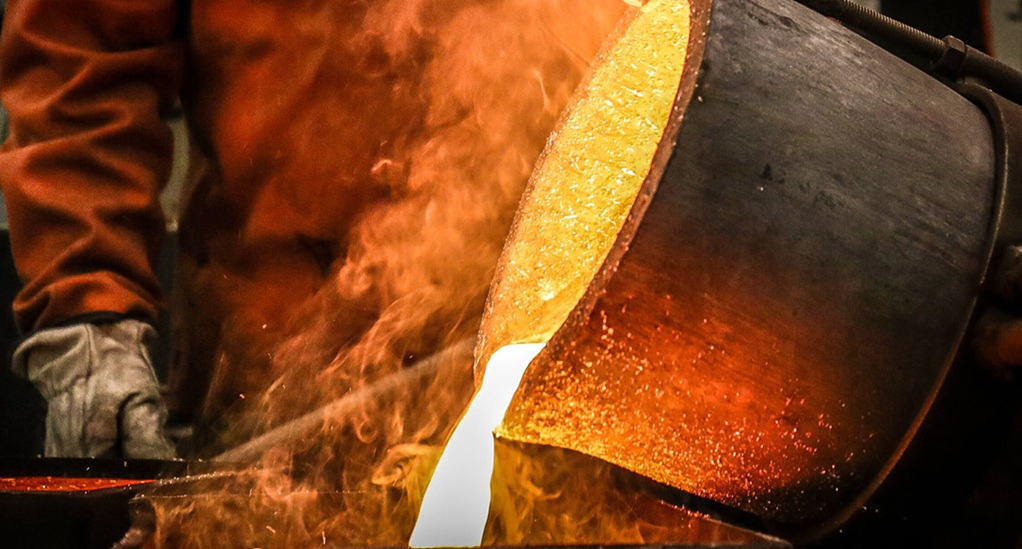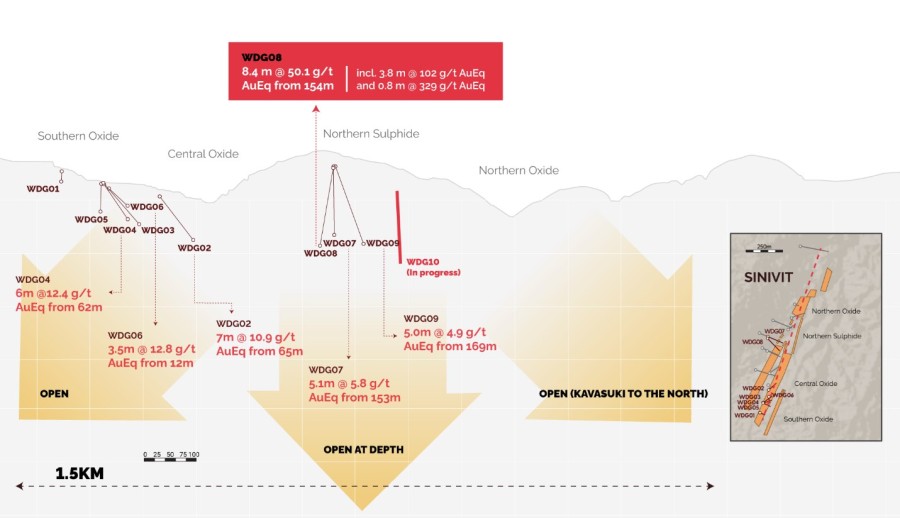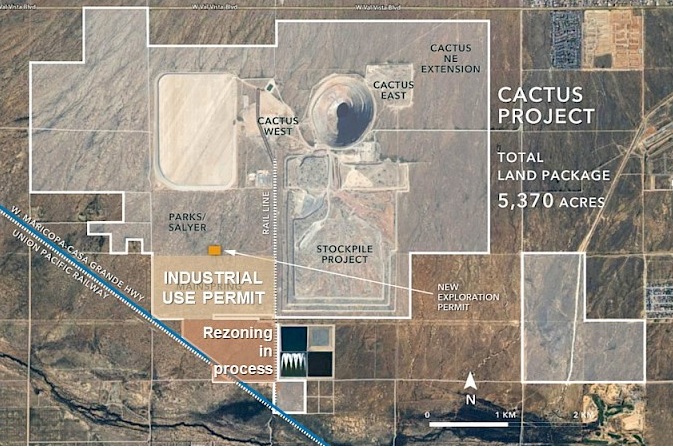Key Highlights
-
Phase One Drilling Completed at Cape Ray: Completed a 2,559.7 metre diamond drill program, testing new key target areas, including resource extensions and newly identified anomalies, with initial assay results anticipated in early to mid-August 2025.
-
Comprehensive Data Review: Conducted an extensive analysis of historical and recent exploration data, identifying promising anomalies and data gaps to refine drill targeting and enhance exploration efficiency.
-
Extensive Till Geochemical Sampling at Cape Ray: Initiated a large till sampling and mapping program at Cape Ray, with an aim to collect approximately 1,500 till samples, strategically designed to identify drill targets at Cape Ray West.
-
Strategic Exploration at Bunker Hill: Winter drilling at Bunker Hill identified gold mineralisation in prominent second and third order structures, including the Branch Fault. A till sampling and mapping campaign is planned, involving over 3,500 samples across Bunker Hill West and Bunker Hill Central to guide targeted drilling now set to commence late third quarter or early fourth quarter 2025.
-
Exploration at Hermitage: Scheduled the most expansive exploration program to date at Hermitage, involving over 1,725 systematic geochemical till samples across high-grade gold anomalies, informed by prior airborne surveys and broad-based sampling programs.
-
Strong Treasury of C$9.2 Million in Cash[1]: Fully funded to deliver one of the largest and most systematic exploration campaigns in AuMEGA's history.
Edmonton, Alberta--(Newsfile Corp. - July 29, 2025) - AuMEGA Metals Ltd (ASX: AAM) (TSXV: AUM) (OTCQB: AUMMF) ("AuMEGA" or "the Company") is pleased to provide an update on its fully funded 2025 exploration program including results from remaining assays related to the winter drill program at the Bunker Hill Project ("Bunker Hill"), located on the Cape Ray Shear Zone ("CRSZ") in Newfoundland and Labrador ("Newfoundland"), Canada.
The Company is currently in one of its most comprehensive exploration programs to-date. The work program now includes extensive fieldwork and targeted drilling at both Cape Ray and Bunker Hill to advance the Company's district-scale land package on the largest known gold-bearing structure along the Cape Ray - Valentine Lake Shear.
AuMEGA Metal's Managing Director and CEO, Sam Pazuki commented "Over the past couple of months, we've taken the opportunity, following our winter and spring drill programs and previous exploration activities, to reassess how we can most efficiently and effectively achieve our ultimate objective: making the next major mineral discovery in the province. This has included a thorough review of historic and existing data and exploration techniques to explore through glacial overburden. This includes reverse circulation bottom-of-hole drilling, till geochemical sampling, diamond drilling, and airborne geophysical techniques. We have further enhanced our exploration program, one that is now more focused, more data-driven, and designed to maximise return on investment and unlock shareholder value.
"We have completed the first phase of our 2025 drill program at Cape Ray, focused on making new discoveries and expanding resources through proper step-out drilling - something that, surprisingly, has been limited by any company to date. Our analysis over the past few years has shown that most drilling has targeted directly within the pit shell outlines, with minimal attention paid to extensions. That's what we're now addressing and see as new opportunities to grow our mineral resource.
At the same time, we've mobilized the largest field program in the Company's history, with nearly thirty geologists and technicians currently collecting what we believe is critical structural and geochemical data over the Cape Ray West target area to identify new targets for future drilling and complementing the recent drilling completed.
By the end of July and subject to weather conditions, we expect to return to Bunker Hill to replicate this approach ahead of resuming drilling there in late third quarter or early fourth quarter 2025. This work is designed to reduce reliance on scout diamond drilling and ensure that every drill metre is well targeted and high value.
I'm genuinely excited about what lies ahead. We have an incredible team under new technical leadership, a strong treasury that allows us to execute this program, and a committed shareholder base that supports doing exploration the right way - with discipline, purpose, and the ambition to make real discoveries."
General Overview
Over the past two months, the Company conducted an extensive review of historical and newly acquired exploration data across all project sites[2]. This review focused on refining methodologies to accelerate discoveries efficiently and effectively. A significant portion of the exploration data analysed pertains to the Cape Ray Project ("Cape Ray"). Data evaluation demonstrates systematic soil and till surveys as highly effective in identifying mineralisation trends, as illustrated in Figure 1.
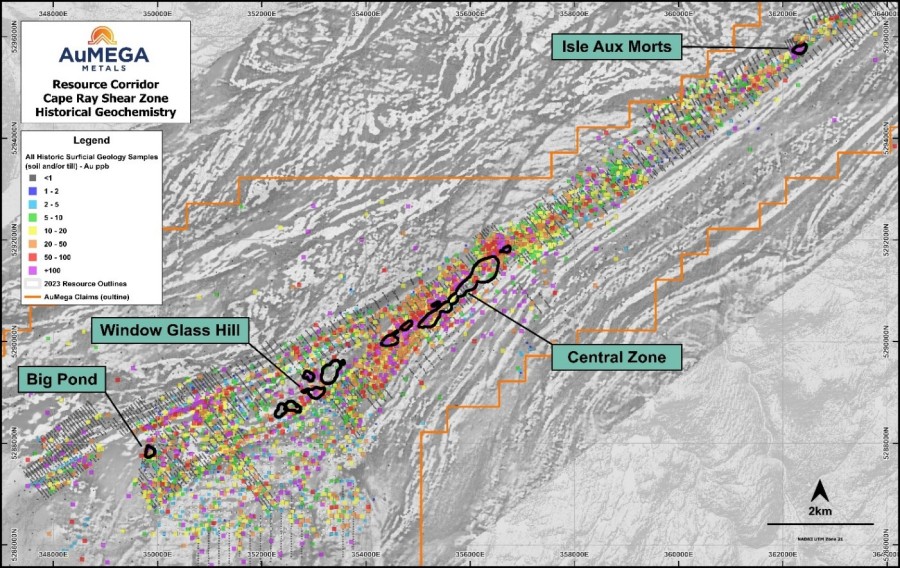 Figure 1: Historic surficial geochemical footprint and pit shell outlines.
Figure 1: Historic surficial geochemical footprint and pit shell outlines.
This comprehensive review uncovered several promising anomalies across Cape Ray and other projects such as Bunker Hill and Grandy's, while simultaneously highlighting specific data gaps critical for optimising drill targeting. Complementing ongoing drilling efforts at Cape Ray, the Company has launched an extensive till sampling and mapping campaign across the CRSZ. Results from these initiatives at Cape Ray, Bunker Hill, and Hermitage are expected to identify and refine drill targets, significantly reducing the expense and reliance on broad scout drilling approaches used previously.
Cape Ray Project
The Cape Ray Project currently hosts 420 koz of gold in indicated resources and 141 koz in inferred resources, based on a gold price of $1,750 per ounce[3]. In late May 2025, the Company commenced an initial phase of diamond drilling aimed at testing extensions of existing mineral resources and newly identified drill targets.
Nine drill holes totaling approximately 2,559.7 metres were completed:
-
Three holes, CRD404, CRD405 and CRD406, located 800 metres along strike to the west of the Central Zone deposits (Figure 2).
-
One hole, CRD407, targeted a newly identified area 500 metres west of the Window Glass Hill deposits (Figure 2).
-
Three holes, CRD408, CRD409 and CRD410, were drilled in a new target area located 600 metres east of Window Glass Hill and west of Central Zone deposits (Figure 2).
-
Two holes, CRD411 and CRD412, tested down-plunge extensions at the Central Zone Z04 and Z41 deposits as a follow-up to the deep drill holes drilled in 2024 at Central Zone (Figure 2).
Initial assay results from these drill holes are anticipated in mid-August 2025.
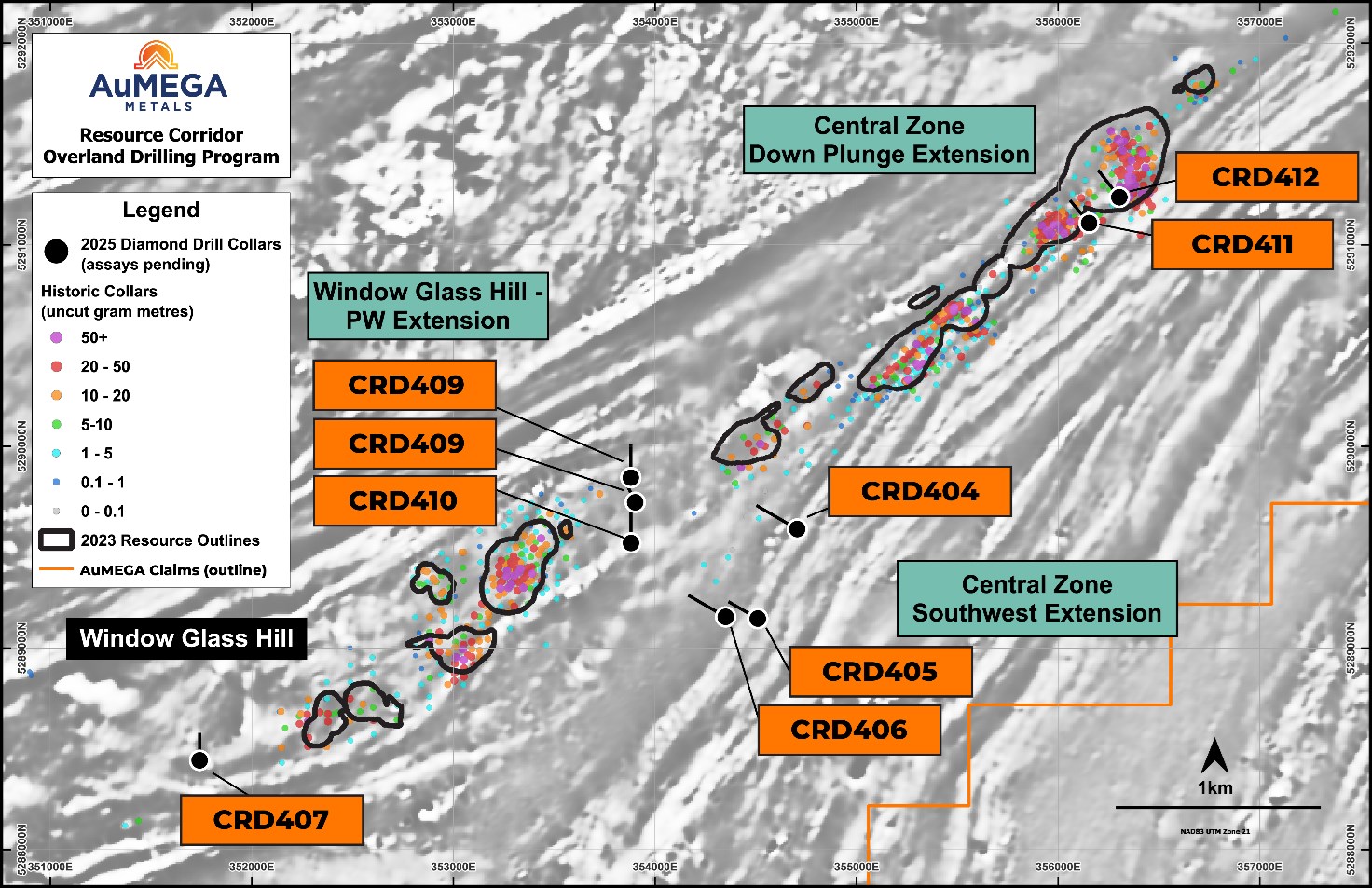 Figure 2: Cape Ray 2025 Drill Program - Phase One
Figure 2: Cape Ray 2025 Drill Program - Phase One
Earlier in May 2025, an electromagnetic ("EM") survey was completed over the entire Cape Ray area. The goal of this survey was to identify geophysical signatures similar to the known deposits. The data from this survey is currently being processed.
The Company is executing an extensive till geochemical sampling and mapping program at Cape Ray West (Figure 3). Historical analysis underscores a strong correlation between geochemical till samples and established mineral resources. Thus, the current sampling initiative aims to integrate the layers of geophysical, airborne magnetics and EM, geological through mapping and modern surficial geochemical data to help identify new drill targets and refine specific drill-ready targets for subsequent exploration phases.
 Figure 3: Cape Ray West Till and Rock Sampling Program
Figure 3: Cape Ray West Till and Rock Sampling Program
The Company plans to collect 1,500 samples covering an area of approximately 16 km2, marking the largest systematic sampling effort ever undertaken at Cape Ray. Historical data indicates that methodical, large-scale sampling followed by targeted drilling is highly effective in driving discoveries (Figure 1). This program is expected to conclude by late July 2025, with assay results available shortly thereafter.
Bunker Hill
Earlier in the year, the Company executed a winter drilling program comprising 147 reverse circulation (RC) drill holes (totaling 1,397 metres) and 15 diamond drill holes (totaling 3,673.25 metres)[4]. The RC drilling primarily focused on shallow, bottom-of-hole (BOH), and base-of-till (BOT) sampling to inform future deeper drilling.
BOH sampling previously identified several zones for follow-up[5]. Final assays from BOT samples have now been received and reported in Figure 4. This dataset will be used in conjunction with the Company's 2024 Bunker Hill West till program[6] and the planned 2025 survey to provide key geochemical data to direct future exploration campaigns.
Diamond drilling included five drill holes at the Nitty Gritty target area, with the remainder focused along the corridor connecting Nitty Gritty to Bunker Hill West. Weather-related disruptions prevented drilling at the high-priority Bunker Hill West target. Previously announced assay results, including drill hole CRD396 (intersecting 1.84 g/t gold over one metre from a depth of 10 metres along the newly identified Branch Fault), highlighting the area's geological significance[7].
Recent assay results provided valuable geological and structural insights; however, no significant intersections were identified. These early-stage diamond drill holes were primarily exploratory, designed to enhance geological understanding without diminishing the area's mineral potential.
Drill Program at Bunker Hill
Following this extensive review, the Company decided to defer the planned follow-up diamond drilling at Bunker Hill late in the third quarter or early fourth quarter 2025. Fieldwork will recommence in late July 2025, mirroring current methodologies at Cape Ray, encompassing comprehensive till geochemical sampling and mapping:
-
Infill till geochemical sampling to 200 metre line spacing and mapping will cover Bunker Hill West, known for historic high-grade gold occurrences[8] and favorable geological complexity, collecting over 600 till samples across 19 km² (Figure 5).
-
An expansive till geochemical sampling and mapping campaign will be undertaken at Bunker Hill, encompassing the Branch Fault, Nitty Gritty and key segments along the CRSZ, with approximately 3,800 samples across 56 km² (Figure 5).
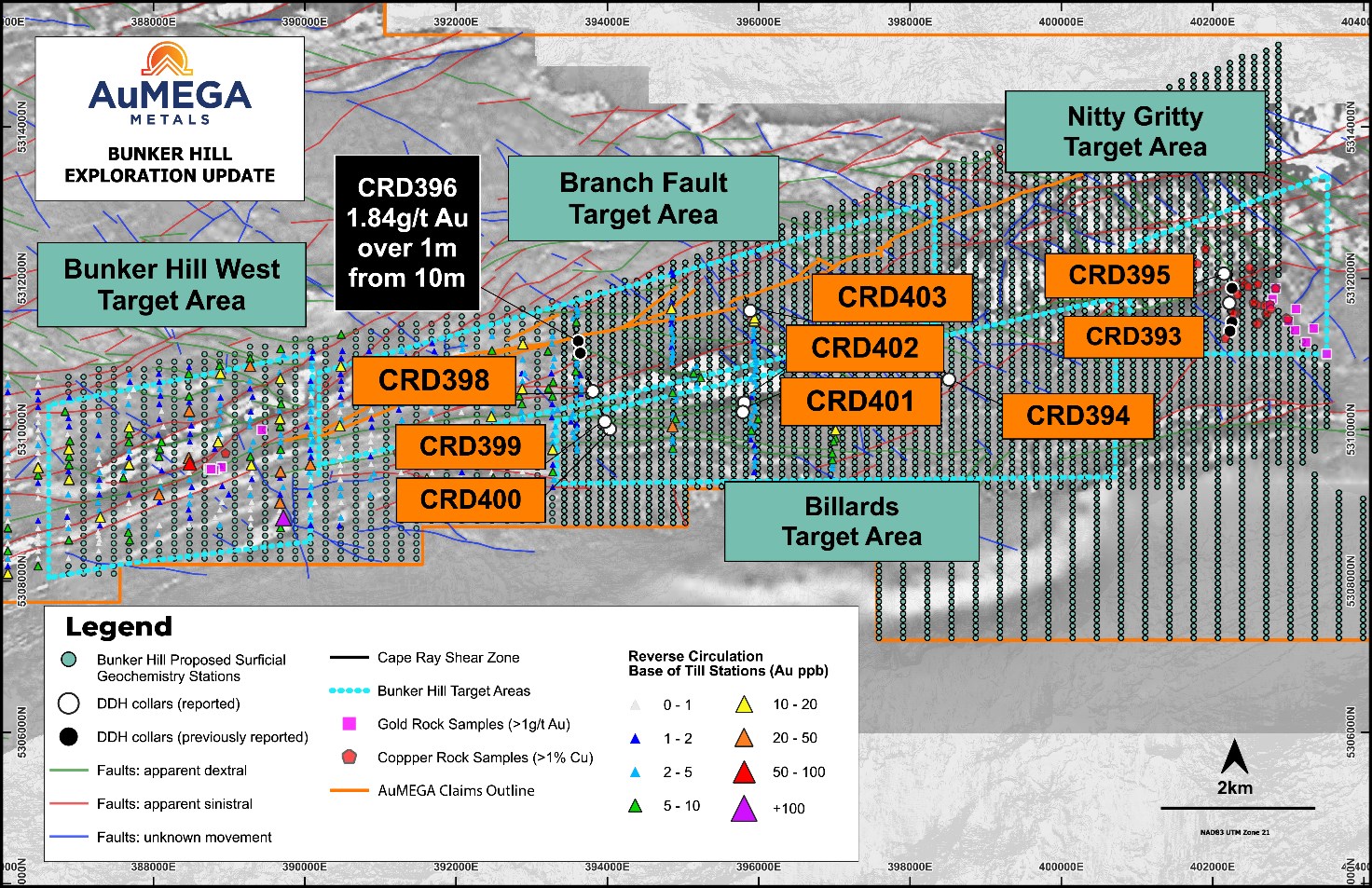 Figure 5: 2025 Bunker Hill Sampling Program
Figure 5: 2025 Bunker Hill Sampling Program
Results from these programs will inform targeted drilling planned for later third quarter or early fourth quarter 2025.
Hermitage
At Hermitage, the Company is preparing for its largest ever surface exploration campaign. This program follows promising results[9] from previous extensive sampling initiatives and a high-resolution airborne magnetic survey conducted in late 2024[10].
Planned for the third quarter 2025, a comprehensive field exploration campaign will cover the project's central region, targeting previously identified high-grade gold anomalies (Figure 6). This effort includes systematic till geochemical sampling with over 1,700 samples planned, covering a significant project area to further refine and prioritize drill targets.
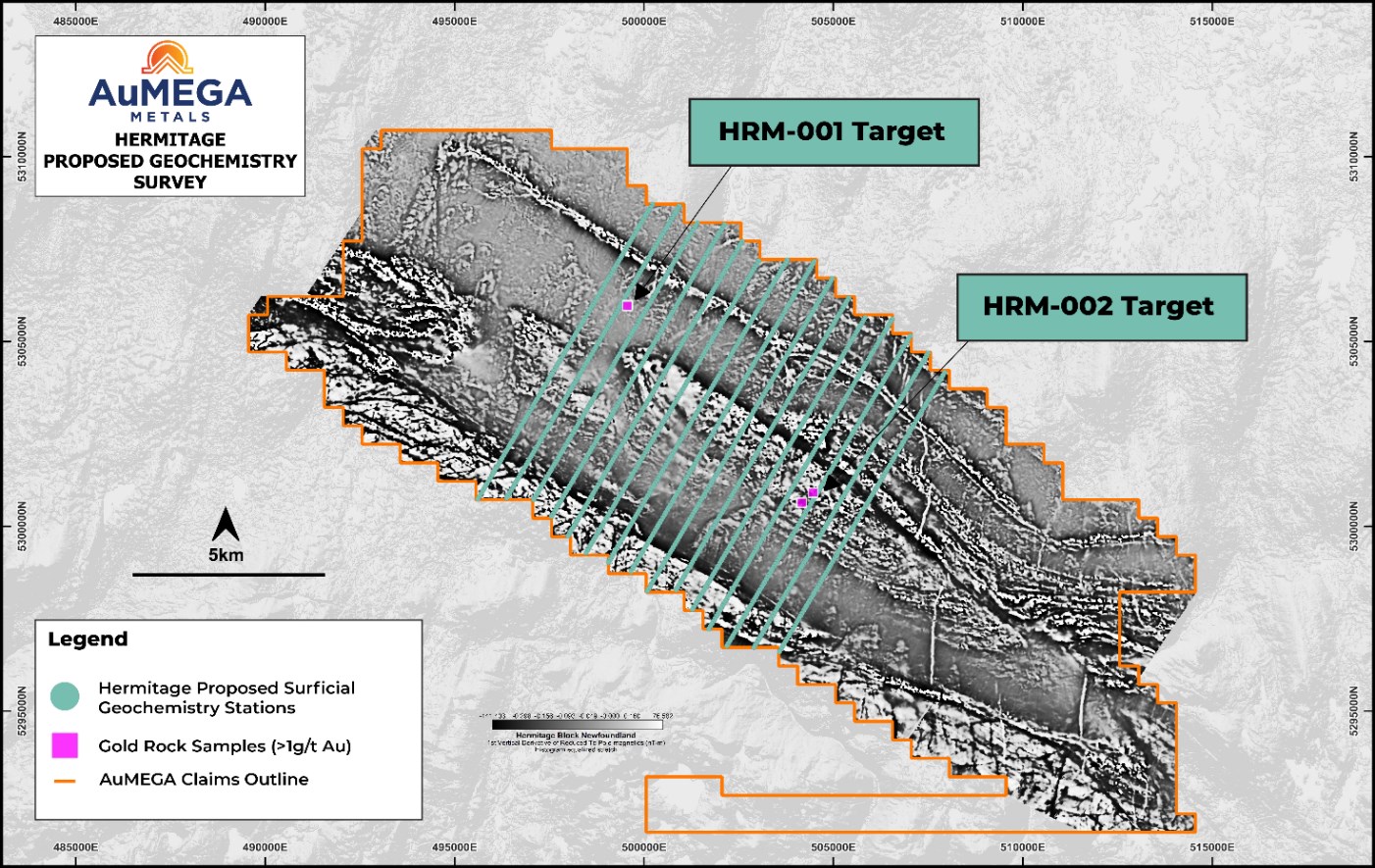 Figure 6: 2025 Hermitage till geochemical sampling and mapping program
Figure 6: 2025 Hermitage till geochemical sampling and mapping program
This announcement has been authorised for release by the Company's Board of Directors.
This release aligns with the requirements of the National Instrument 43-101. A JORC Table 1 is not required under National Instrument 43-101. The Company has included a JORC Table 1 in the ASX version of the news release which can be found on the ASX website at www.asx.com.au or AuMEGA Metal's website at www.aumegametals.com.
To learn more about the Company, please visit www.aumegametals.com, or contact:
Sam Pazuki, Managing Director & CEO
Canada Phone: +1 780 665 4925
Australia Phone: +61 8 6117 0478
Email: This email address is being protected from spambots. You need JavaScript enabled to view it.
About the Company
AuMEGA Metals Ltd (ASX: AAM) (TSXV: AUM) (OTCQB: AUMMF) is utilising best-in-class exploration to explore on its district scale land package that spans 110 kilometers along the Cape Ray Shear Zone, a significant under-explored geological feature recognised as Newfoundland, Canada's largest identified gold structure. This zone currently hosts Equinox Gold's Valentine Gold Project, a multi-million-ounce deposit which is the region's largest gold project, along with AuMEGA's expanding Mineral Resource.
The Company is supported by a diverse shareholder registry of prominent global institutional investors, and strategic investment from B2Gold Corp, a significant, intermediate gold producer.
Additionally, AuMEGA holds a 27-kilometre stretch of the highly prospective Hermitage Flexure and has also secured an Option Agreement for the Blue Cove Copper Project in southeastern Newfoundland, which exhibits strong potential for copper and other base metals.
AuMEGA's Cape Ray Shear Zone hosts several dozen high potential targets along with its existing defined gold Mineral Resource of 6.1 million tonnes grading an average of 2.25 g/t, totaling 450,000 ounces of Indicated Resources, and 3.4 million tonnes grading an average of 1.44 g/t, totaling 160,000 ounces in Inferred Resources[11].
AuMEGA acknowledges the financial support of the Junior Exploration Assistance Program, Department of Industry, Energy and Technology, Provincial Government of Newfoundland and Labrador, Canada.
Reference to Previous Announcements
In relation to this news release, all data used to assess targets have been previously disclosed by the Company and referenced in previous JORC Table 1 releases. Please see announcements dated: 7 September 2021, 30 May 2023, 16 May 2025, 25 November 2024, 26 May 2025, 22 March 2023, 13 September 2023, 13 November 2023, 18 March 2024 ,5 September 2024 and 4 February 2024.
In relation to the Mineral Resource estimate announced on 30 May 2023, the Company confirms that all material assumptions and technical parameters underpinning the estimates in that announcement continue to apply and have not materially changed. The Company confirms that the form and context in which the Competent Person's findings are presented have not been materially modified from the original market announcement.
Drilling and Analytical Procedures
Diamond drilling operations generally uses NQ sized core, with HQ sized core being utilised only in highly fractured ground to ensure maximum recovery and drill stability. All diamond drill core in competent ground is orientated using a REFLEX ACT III core orientation tool with the bottom-of-hole line marked. Downhole surveys for all NQ and HQ diamond drill holes are recorded using either a REFLEX EZ-TRAC survey or an OMNIx™42 gyro. All reverse circulation drill holes are shallow in nature and are not downhole surveyed. The orientation of the holes is decided based on the Company's geological interpretation, down hole lengths are reported as true width is not known due to the Greenfields nature of drilling.
All diamond drill holes and reverse circulation holes are logged in entirety by onsite geologists before being selected for sampling. For diamond drilling, samples typically range from 0.2 - 1.2 metres in length respecting the geological or mineralisation contacts present. The drill core is cut longitudinally following a pre-marked cutting line. A consistent hemisphere of the core is sent for analytical purposes whilst the other remains as a reference sample of the interval. Pre-numbered alpha-numeric sample bags holding the individual samples are sealed and placed into bulk-bags which is distributed to the laboratory for analysis.
For reverse circulation drilling, samples are collected at the drill site with an aluminium scoop. Each sample represents roughly one metre of drilling and weighs on average two kilograms. Due to the nature of reverse circulation drilling, sample is indiscriminate to geological and/or mineralisation boundaries.
AuMEGA metals used AGAT Laboratories in Thunder Bay, Ontario for the analysis of diamond drill core and reverse circulation drill chips. All samples are dried to 60°C, crushed to 80% passing 2mm, riffle split to 250 grams and pulverized to 95% passing 105µm. Gold is analyzed by fire assay with an ICP-OES finish while multi-element samples are analyzed with a 49 element ICP-OES/MS package with a four-acid digestion. Analysis of the Base of Till samples occurs at SGS in Grand Falls-Windsor, Newfoundland and Labrador where they are dried to 60°C, screened to 63µm and then analyzed for 49 elements by ICP-MS after a 25-gram aqua regia digest. Samples are securely stored at the Company's facilities until they are shipped either by a trusted 3rd party shipper or company personnel to the lab. Both SGS and AGAT are ISO accredited laboratories and are independent from the Company.
All sampling was carried out under AuMEGA's sampling guidelines which adheres to industry best practice. All QA/QC data is reviewed by the Database Manager, Exploration Manager and/or Competent Person to ensure quality of assays; batches containing multiple Certified Reference Material (CRM) that report outside of two standard deviations from expected values are re-assayed. Any batches containing individual CRM's greater than three standard deviations from expected values are also re-assayed.
The Company does not recognise any factors from the drilling, drill recovery, sample condition or sampling protocols that may affect the accuracy of the results or cause bias.
Qualified Person
The scientific and technical information in this press release was reviewed and approved by Shamus Duff, P. Geo., Project Geologist. Mr. Duff is a Qualified Person as defined under National Instrument 43-101 and a Professional Geologist registered with Professional Engineers and Geoscientists of Newfoundland and Labrador (PEGNL). Mr. Duff consents to the publication of this press release and certifies that the information is provided fairly and accurately represents the scientific and technical information disclosed within it.
[1] As at 30 June 2025
[2] News release dated 7 September 2021
[3] News release dated 30 May 2023
[4] News release dated 26 May 2025
[5] News release dated 16 May 2025
[6] News release dated 25 November 2024
[7] News release dated 26 May 2025
[8] New release dated 22 March 2023
[9] News releases dated 13 September 2023, 13 November 2023, 18 March 2024 & 5 September 2024
[10] News releases dated 4 February 2024
[11] News release dated 30 May 2023



